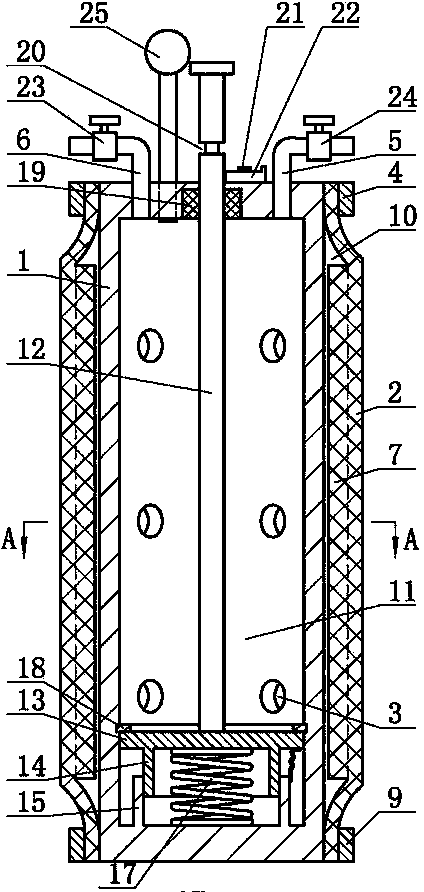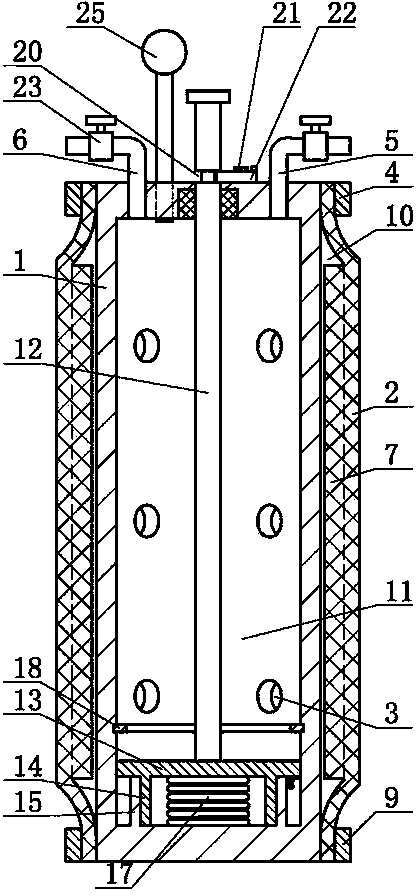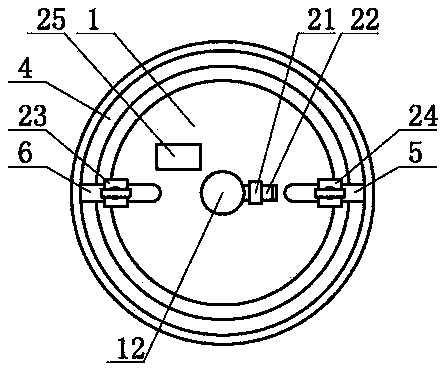Method for pore forming in building member by using self-pressurized expansible mold and mold release
A building component, inflatable technology, used in molds, manufacturing tools, unloading devices, etc., can solve the problems of difficult to guarantee the quality of holes, complicated operations, damage to solidified materials, etc., to achieve uniform quality, reduce the number of workers, and ensure The effect of hole quality
- Summary
- Abstract
- Description
- Claims
- Application Information
AI Technical Summary
Problems solved by technology
Method used
Image
Examples
Embodiment Construction
[0019] The mold of the present invention includes a hard shell 1, the interior of the hard shell 1 is a cavity 11, a soft cover 2 is installed around the side wall of the hard shell 1, and the two ends of the soft cover 2 respectively pass through the first clamp 4 Connect with the second clamp 9 and the hard shell 1, an expansion chamber 10 is formed between the inner wall of the soft cover 2 and the outer wall of the hard shell 1, and a through hole 3 is set on the side wall of the hard shell 1, and the cavity 11 passes through the through hole 3 It communicates with the expansion chamber 10, a piston 13 is installed in the cavity 11, one side of the piston 13 is connected with the inner sleeve 14, an outer sleeve 15 is arranged outside the inner sleeve 14, the outer sleeve 15 is connected with the hard shell 1, and the piston 13 is connected with the hard casing 1. A spring 17 is installed between the hard shells 1, the other side of the piston 13 is connected to one end of ...
PUM
 Login to View More
Login to View More Abstract
Description
Claims
Application Information
 Login to View More
Login to View More - R&D
- Intellectual Property
- Life Sciences
- Materials
- Tech Scout
- Unparalleled Data Quality
- Higher Quality Content
- 60% Fewer Hallucinations
Browse by: Latest US Patents, China's latest patents, Technical Efficacy Thesaurus, Application Domain, Technology Topic, Popular Technical Reports.
© 2025 PatSnap. All rights reserved.Legal|Privacy policy|Modern Slavery Act Transparency Statement|Sitemap|About US| Contact US: help@patsnap.com



